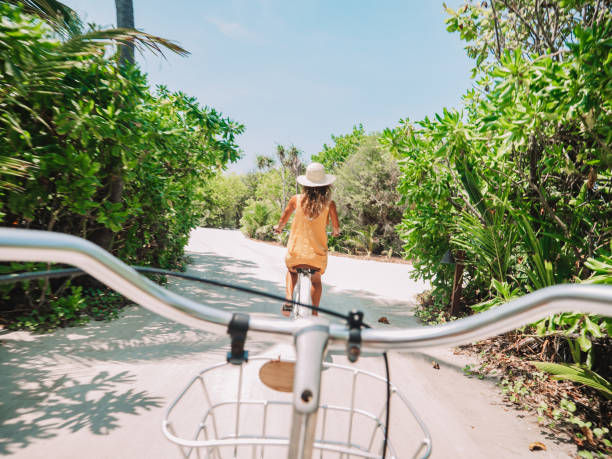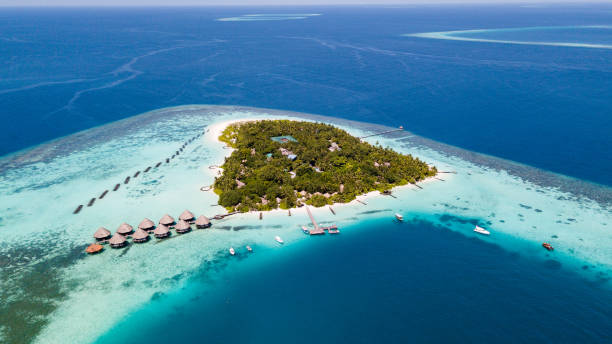How livestock and aquaculture are integral to life in Maldives
Livestock and aquaculture have been integral to life in the Maldives for centuries. They have played a vital role in the development of the nation, providing both food and economic security. Livestock includes cows, goats, sheep, pigs, and chickens, while aquaculture is focused on the farming of fish and other marine creatures.
In addition to providing a stable source of food and nutrition, these practices also provide employment opportunities for locals and help to sustain the local economy. Through this blog post, we’ll explore how livestock and aquaculture are integral to life in Maldives.
Agriculture in Maldives
Livestock and aquaculture in the Maldives are a major source of income and livelihood for many of the island’s inhabitants. Agriculture is an important sector of the country’s economy, with over 35% of its workforce engaged in this industry. Agriculture contributes up to 5.5% of the total GDP, which is a significant number when considering the population size. The most popular crops grown in the country include coconut bananas nana, papaya, taro, and sweet potatoes.

Livestock and aquaculture are also prominent in the Maldives; goats, pigs, chickens, ducks, and fish are reared for food for sale at local markets. Fishers came to use traditional fishing methods or modern equipment to capture a variety of fish species from the rich ocean waters surrounding the islands. Livestock and aquaculture in the Maldives provide locals with healthy foods and generate income for the country’s agricultural industry.
Animal husbandry in Maldives
The Maldives is an archipelago of around 1,200 islands and has a limited land area for livestock and aquaculture. This is why livestock and aquaculture are integral to life in the Maldives, playing a major role in the country’s food security, eco economic and socio-cultural identity the Maldivian livestock sector plays a vital role in the livelihoods of many islanders, providing employment, in, come and nutrition.
Livestock raised in the Maldives
Livestock raised in the Maldiincludeslude sheep, goats, cattle, pigs, pou, try, and camels. Meanwhile, the aquaculture industry focuses on shrimps and other marine species, such as parrotfish, lob,ster, and sea cucumbers. Additionally, seaweed farming and oyster cultivation are gaining importance. Small-scale fisheries also play a significant role in supplying much of the population with seafood. All these activities contribute significantly to the economy of the country and provide employment opportunities for the people living there.
Fisheries in Maldives
Maldives is surrounded by an abundance of sea life, and it is no surprise that fishing has become a major part of the country’s economy. Fisheries make up a significant portion of the nation’s livestock and aquaculture industry. There are various types of fisheries found the in the Maldives, including subsistence, commercial, and recreational.
Subsistence fisheries are small-scale operations that are used to provide food for local families. Commercial fisheries operate on a larger scale, providing fish and other marine resources for sale in the market. Recreational fishing is popular among tourists and locals alike, and often involves boats equipped with the latest fishing gear.
Maldivian fishermen take advantage of the vast marine resources available to them in their waters. The main catch of fisheries in the country includes tuna, seer fish, barracuda, parrotfish, and grouper. Additionally, shellfish, squid, and other invertebrates also provide a source of food for the local population. Aside from being an important part of the diet, these marine species are also used for export and tourism.
The local government of Maldives actively promotes sustainable fishing practices by creating Marine Protected Areas (MPAs) and regulating the number of vessels allowed in the area. This has enabled local fishermen to protect their stocks while still earning a living from the sea. Overall, fisheries play an important role in the livelihoods of many Maldivians and contribute significantly to the nation’s economy.

Why livestock and aquaculture are important in Maldives
Livestock and aquaculture are integral to the life of Maldives, providing an essential source of income and nutrition for people living in the country. Livestock includes cows, goats, sheep, and poultry, while aquaculture involves cultivating aquatic organisms such as fish and crustaceans. Both are important components of agriculture, with the former providing a source of meat, milk, eggs, hides, and wool, while the latter yields fish and other seafood products for consumption.
In addition to providing food for locals, livestock and aquaculture also serve as a major source of employ menthe in the Maldives. Raising ani employs many Maldivians, particularly in rural areas. Fish farmers also employ large numbers of people in their operations, from those harvesting fish to those handling transportation and marketing. This helps to increase economic development in the country by creating jobs.
Livestock and aquaculture also make a significant contribution to the overall GDP of Maldives. Animal husbandry accounts for approximately 10% of the GDP while fisheries account for around 25%. This means that a large portion of the population depends on these industries for their livelihoods. Without them, it would be difficult for the Maldives to achieve its goals of economic growth and poverty reduction.

Livestock and aquaculture are essential to life in the Maldives
Livestock and aquaculture are essential to life in the Maldives because they provide vital sources of income and nutrition. They also generate employment opportunities and contribute significantly to the country’s economy. These industries are integral parts of the agricultural sector and play an important role in promoting development in the country.
Ocean arey is the Maldives suitable for fishing and tourism?
Maldives is a country located in the Indian Ocean that consists of more than 1,200 coral islands. The warm tropical climate and the variety of marine life make the Maldives an ideal destination for fishing and tourism.
Livestock and aquaculture have been integral to life in the Maldives since ancient times. Animal husbandry is an important industry in the Maldives, with a wide variety of species including goats, chickens, ducks, and pigs. The coastal areas are also home to several fisheries, which provide a significant source of income for local people. Fish is a major component of the local diet and many families supplement their income by selling fish.
Tourism has also become an important part of the economy in recent years. The beautiful tropical beaches and lush coral reefs are a major draw for tourists, who can also enjoy deep-sea fishing, diving, and snorkeling. The local seafood is also popular among visitors and contributes to the country’s economy.
Overall, the combination of livestock and aquaculture along with its abundance of marine life make the Maldives an ideal location for fishing and tourism. The beautiful natural environment and friendly people attract visitors from all around the world while providing locals with a secure source of income.

